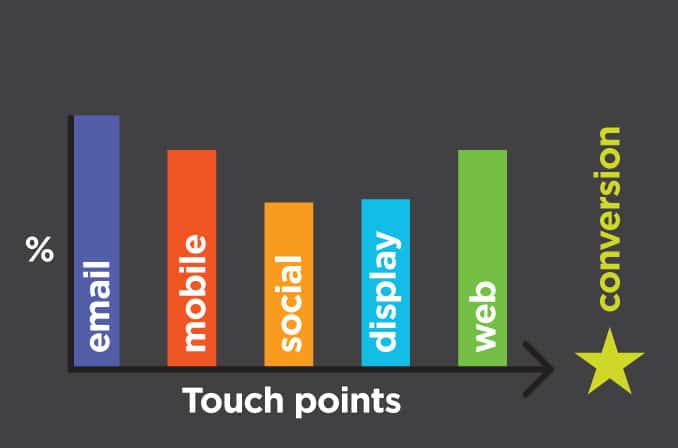
At the beginning of the 20th Century John Wanamaker famously said, “Half the money I spend on advertising is wasted; the trouble is I don’t know which half.” Little has changed over the last 100 years.
I firmly believe attribution is a people problem, not a technology problem. People tend to be averse to embracing attribution because they fear their efforts may not be the reason for a conversion. Not being able to trace your marketing endeavors back to successful campaigns is scary and may make individuals feel as though their jobs could be at stake. Rather than knowing the true reason for a conversion most people tend to choose a model that attributes their actions to a specific goal (or success). Don’t worry, we’ll dive deeper into “models” later on.
What is attribution?
Attribution is the action of finding the reason that contributed to a desired outcome. Essentially it’s when you can track why a campaign worked or why it did not work. According to TechCrunch attribution is similar to giving credit to a basketball player who made an assist that led to a three point basket.
What are attribution models? And is there a right or wrong model?
According to Google “An attribution model is the rule, or set of rules, that determines how credit for sales and conversions is assigned to touch points in conversion paths.” There are multiple mathematical attribution models.
In my opinion, the correct model is the one that will give fractional attribution to each piece in the ecosystem (e.g. display, video and search). This rewards influence, interest, as well as purchase. These combine all the factors of the ecosystem. With that being said most brands tend to award the model that skews in their favor in terms of channel. Whatever they see performing they will choose the model that best suits their success.
In a recent conversation with Tracy Kemmer, Director of Client Services at Conversion Logic, I asked her what are some common complaints from brands who integrate with an attribution vendor?
Her response was ““Integrating an attribution vendor will put the spotlight on any data hygiene inconsistencies that have been living beneath the surface. While this process can be very time consuming for the trafficking teams, it does tend to shed light on inefficiencies that when fixed tend to start saving clients administrative budget by reducing team effort on reporting, mining, measurement, taxonomy, and trafficking” – Tracy Kemmer
Brands tend to be afraid of looking under the hood of the car, which goes with my theory that it’s a people problem and not a technology problem. Sometimes you find inefficiencies in marketing efforts and/or places where money can be saved on certain efforts that are not performing as expected. There can be so many stakeholders when it comes to attribution and discovering the good, the bad and the ugly is not always fun!
What is the future of attribution?
I believe there’s lots of opportunity in data point discovery. For example, voice search (e.g. Siri on the iPhone). How many times have you picked up your iPhone and asked Siri to locate the closest gas station or closest fast food restaurant on a road trip? Does this sound familiar to you? Are these touch points being considered when you look at the customer journey? There are so many customer behaviors that we don’t yet attribute to conversions or sales. Attribution, at its core, is really an open architecture to whichever data points one wants to input into a model. It truly is a blank canvas.
Kemmer also added this to our conversation when I asked about the future of attribution, “I believe the complexity to onboard an attribution partner will only get easier over time. I also believe that cross device tracking will eventually become more stable and when that happens it will only increase the value that attribution can provide.”
So I’ll leave you with this key takeaway, look at all your data points and then think about what’s missing. What are you not considering or looking at? For example: Someone plans a vacation and generally on vacation you tend to forget about your diet and treat yourself to decadent meals. It’s possible this person is feeling guilty about eating poorly and might be looking to go on a diet plan or subscribe to a health food delivery service. Consider points that you may not have looked at in the past: location, time, past purchase history, etc.. The customer journey should not be limited to channel only. Look at media as a whole and think about how human interaction and intent fits into the online marketing mix.




